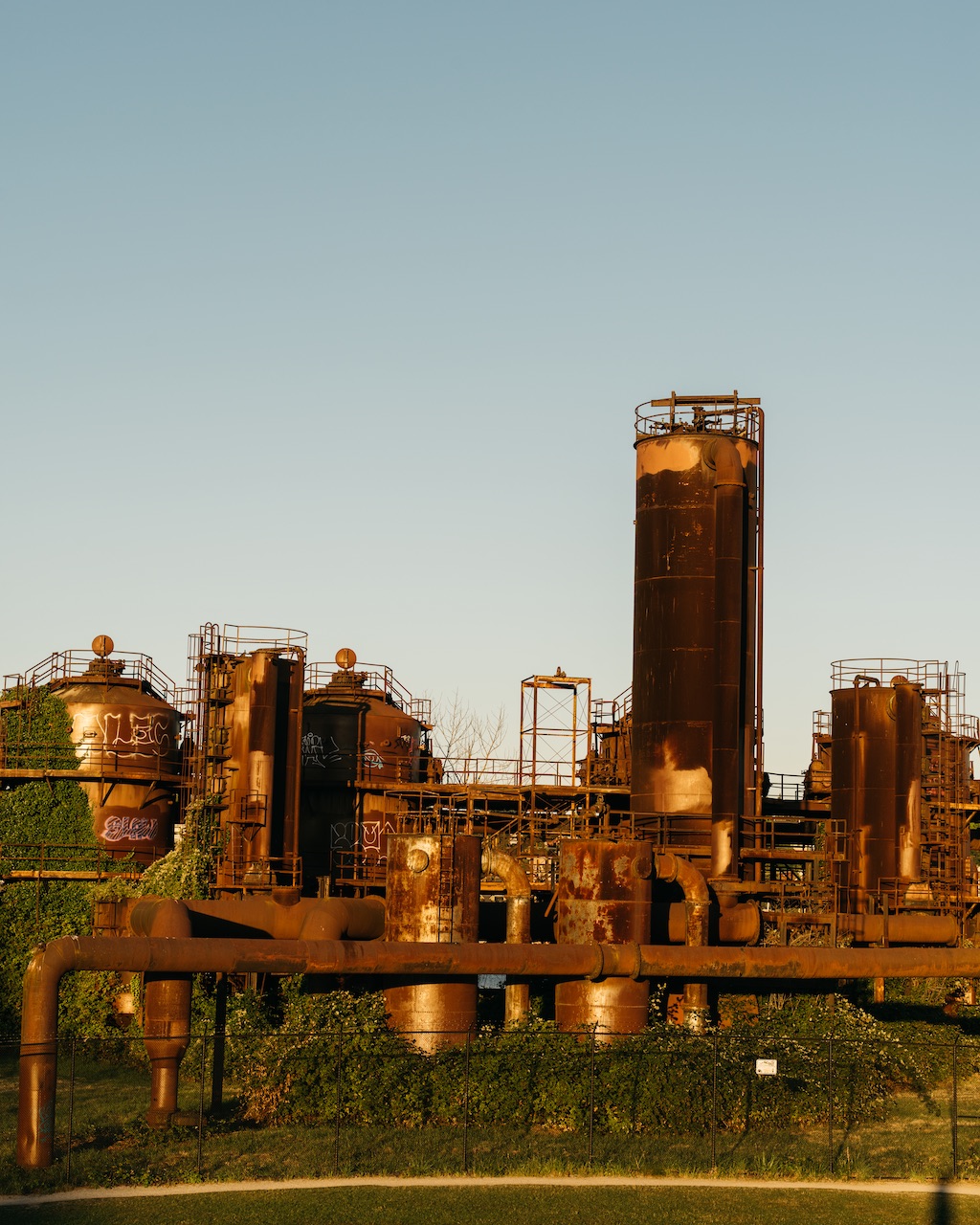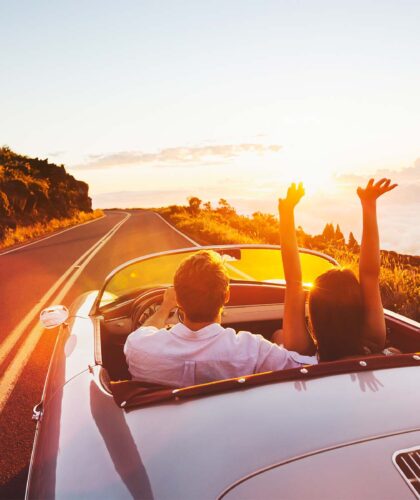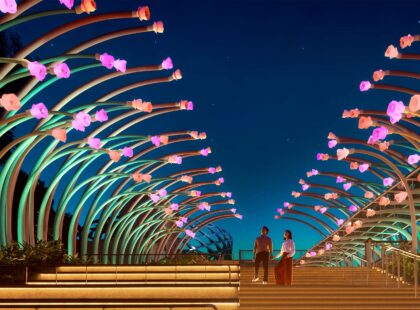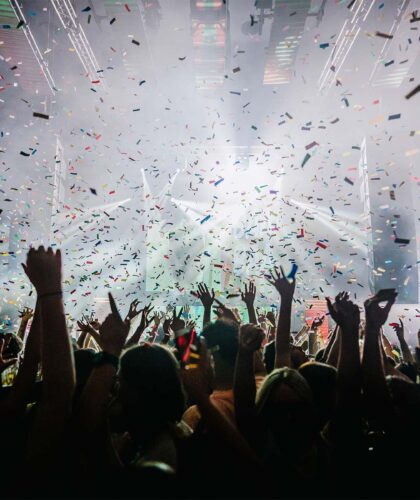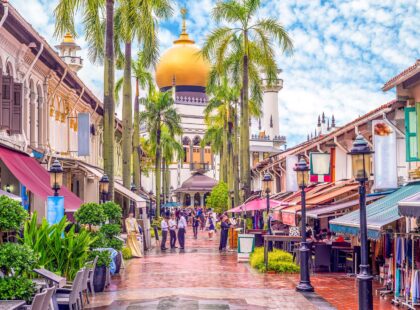It’s one of those blue-sky, hot-and-dry summer days in Seattle, when everyone seems to have escaped to the great outdoors. I’m part of a steady stream of cyclists that is rolling along the Burke-Gilman Trail (BGT). But a canopy of trees beckons, and I veer off the smooth, paved bike lane and onto the crunch of a gravel path beneath the green. I emerge between grassy hills to see an old coal gasification plant looming ahead, its rusty skeleton cloaked in leafy vines.
The industrial relic turned abstract art showpiece of Gas Works Park is a gritty foreground to the glittering backdrop of Lake Union, dotted with pleasure boats and paddleboarders. Bikes are strewn across the surrounding slopes and people lounge languidly in the late-afternoon sun. Across the water, downtown Seattle’s skyscrapers reach for the cerulean sky.
The natural and the urban collide on this detour and all along the eastwest corridor of the BGT, the backbone of Seattle’s biking infrastructure that stretches 32km from Golden Gardens Park at the western edge of the city on the shores of Puget Sound to the Eastside of Lake Washington where it connects to the Sammamish River Trail and the winemaking community of Woodinville. The 41-year-old trail was a historic railroad that once transported the region’s giant felled trees but has now become one of America’s oldest and most successful rail-to-trail conversions.
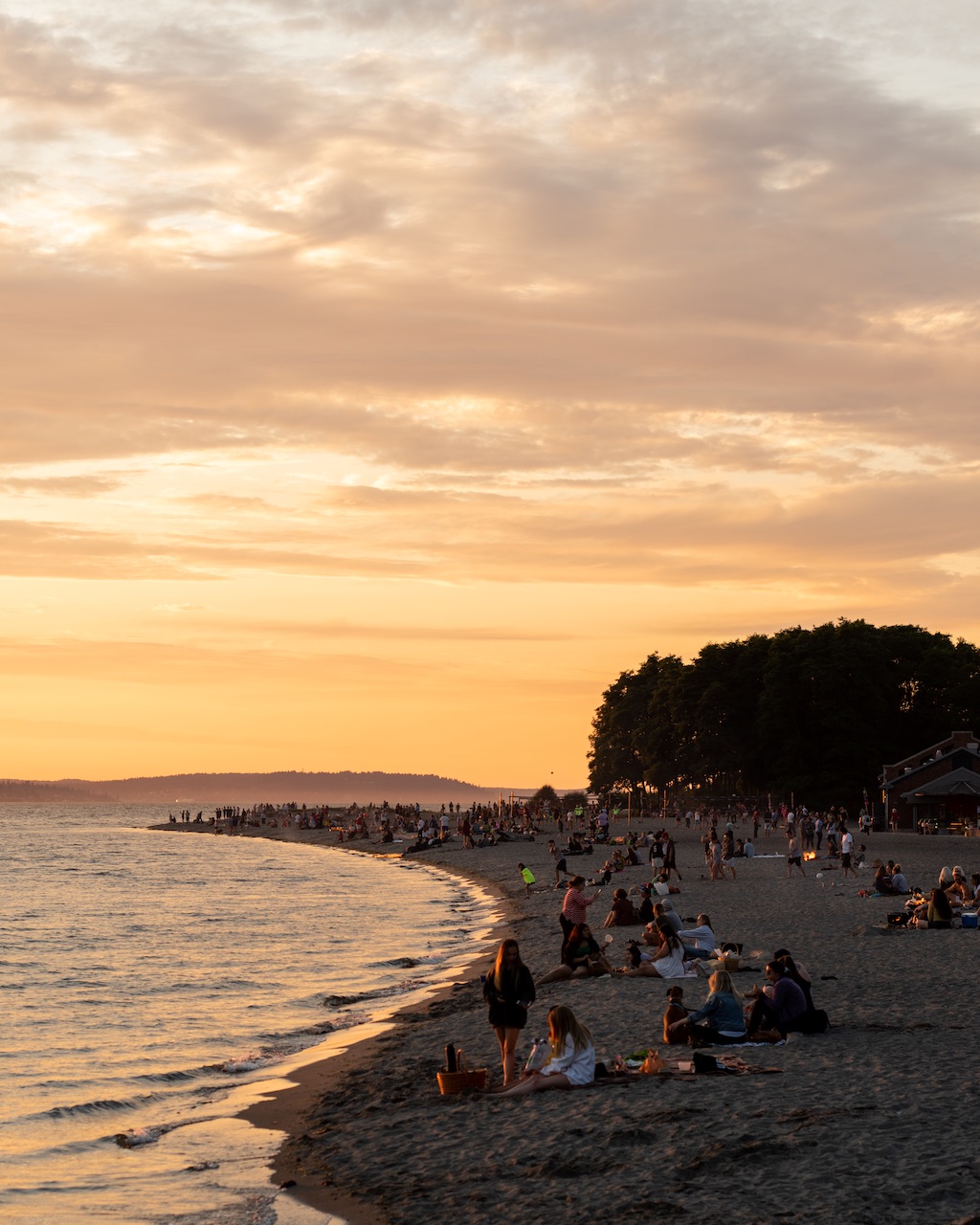
The blissfully flat route takes you on a ride through the diverse personae of a metropolitan area that’s home to nearly four million people. From oceanside beach, it passes a ship canal with locks and industrial docks, crosses characterful neighbourhoods, traverses one of the oldest public universities on the West Coast, skirts two lakes and winds its way along the Sammamish River to the château of Washinton State’s oldest winery.
Soon, this ride will be even more fluid. The so-called “Missing Link” of the BGT, a stretch of more than two kilometres currently without a dedicated path (cyclists navigate warehouses and shipyards on the streets of historic Old Ballard) will connect Golden Gardens in the west with Marymoor Park on the Eastside near Redmond – where Microsoft is headquartered – for a seamless, uninterrupted 43 kilometres (including the Sammamish River Trail extension). Yet, linking up the BGT is only one of the bike-friendly initiatives planned by the Seattle Department of Transportation. Completing a downtown bicycle grid – the Center City Bike Network – is the next big step set for completion this year.
Like thousands of people, Eric Lundquist uses the BGT every day. The co-owner of the year-old Burke-Gilman Brewing Company commutes to and from his day job at the University of Washington (or U-Dub, as it’s known locally) and the brewery further northeast near Laurelhurst. He’s biked 40,000km on the BGT over the last decade. Burly and bearded, resembling a Viking, he stands with crossed arms behind the corrugated-steel-and-woodplanked bar and laughs at the controversy when the BGT was first proposed in the early ’70s: “No one’s ever going to use a long, skinny park like that,” he explains of the naysayers. Today, according to a nearby bike-and-pedestrian counter, 3,179 people are using this long, skinny park on a single day. And the BGT has been inducted to the Rail-Trail Hall of Fame and is part of the Great American Rail-Trail, initiatives of the Rails-to-Trails Conservancy.
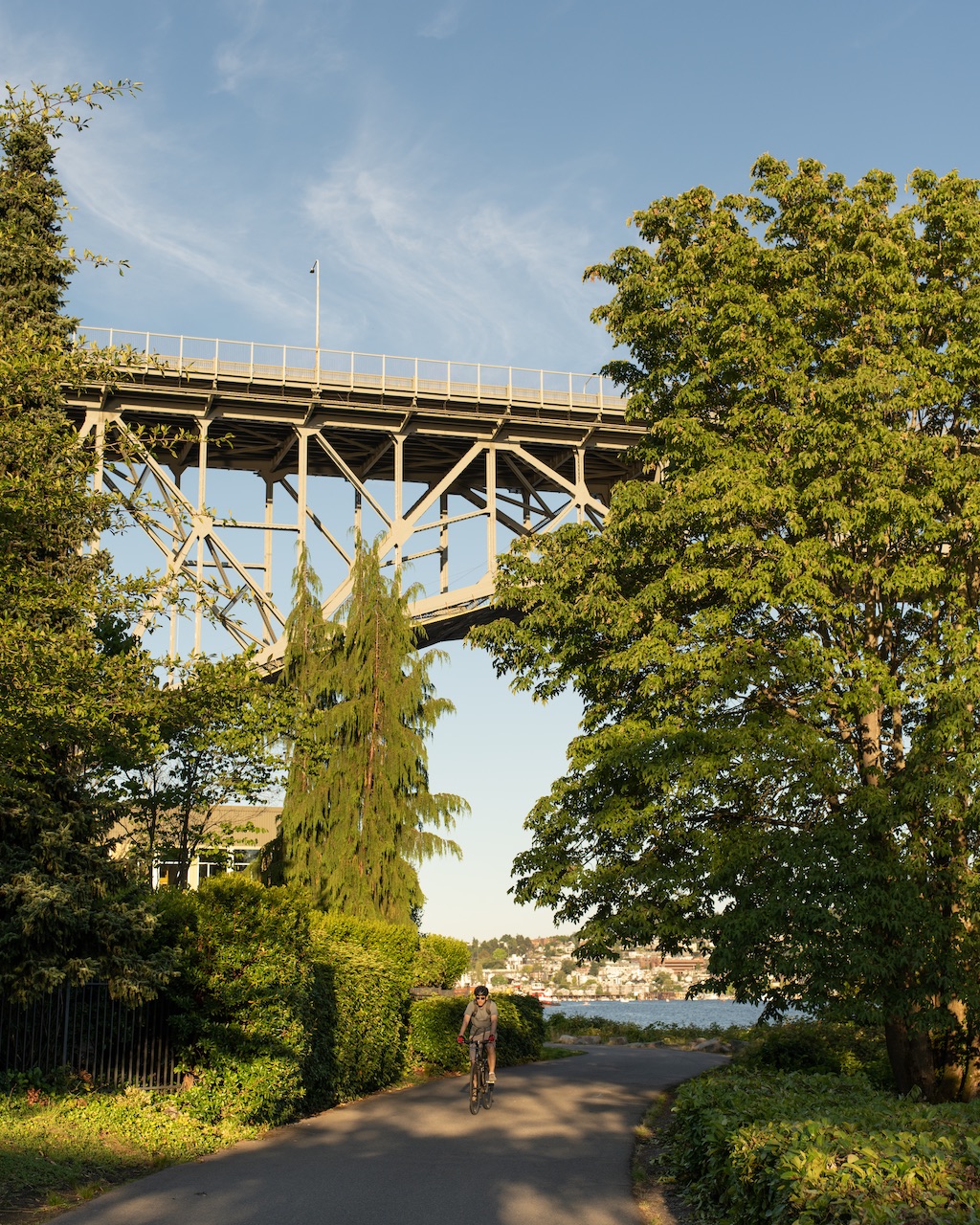
The BGT and, by extension, the brewery, are named after the two men who started the railway back in 1885. Judge Thomas Burke and Daniel Gilman were Seattle businessmen who campaigned for the original railway, and in doing so helped develop the city. It’s this civic background that has inspired the neighbourly brewery, much like it did the rail-to-trail project in the 1970s. Now, though, the two names are more synonymous with the trail than the 19th-century businessmen, as the BGT has become an integral aspect of Seattle’s identity.
I have a Berserker Viking IPA at a communal outdoor table and watch cyclists zip on and off the nearby entryway to the BGT. After refuelling with a taco at the El Camion food truck next to the brewery, I ride through wooded, tunnel-like stretches to the north end of Lake Washington. En route, at Matthews Beach, the city’s largest freshwater beach, I spy a bald eagle swooping towards the water to scoop up an unlucky fish. The arrival of an ice cream truck sends kids sprinting to line up for icy treats, while lifeguards do crunches on the lawn.
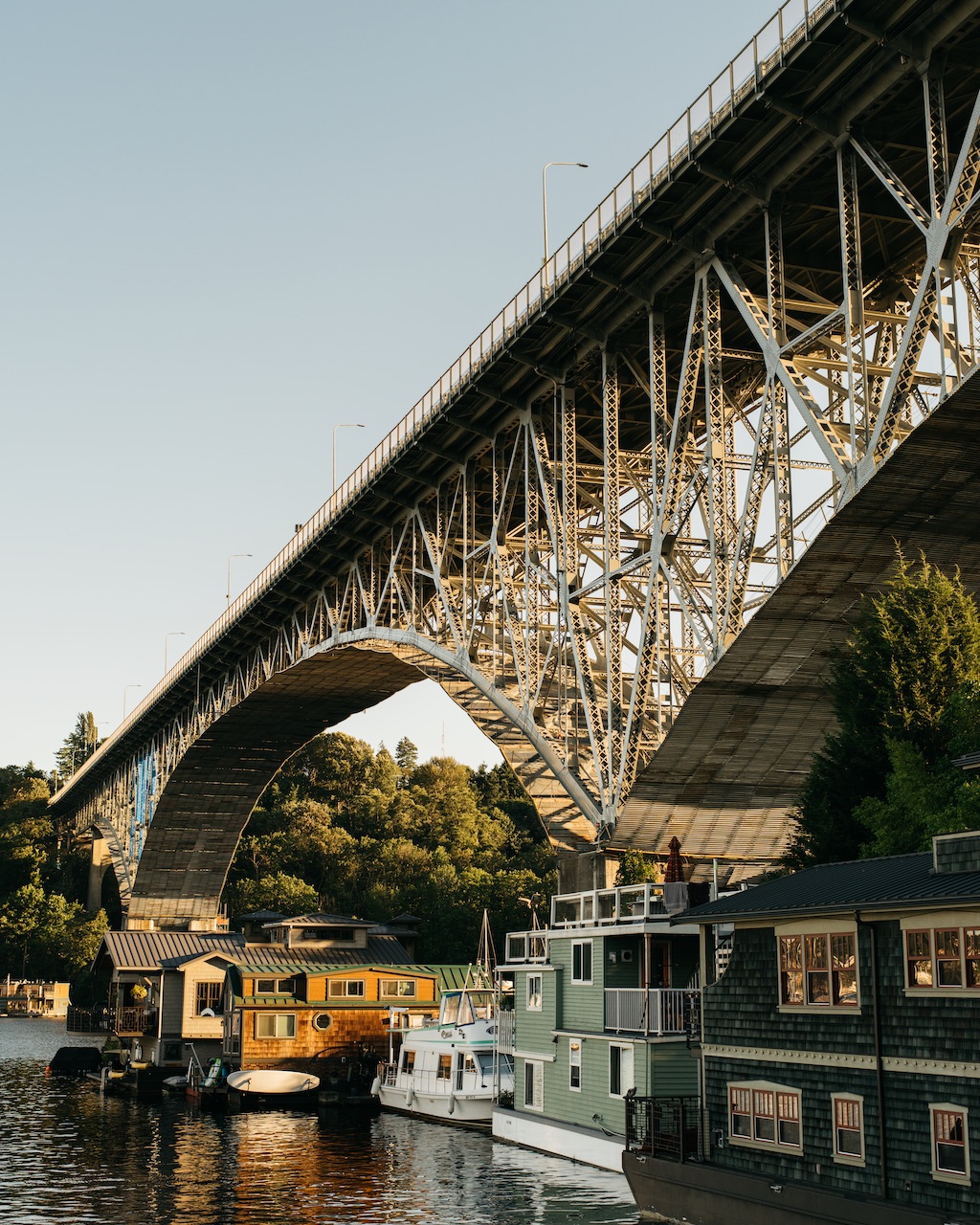
West of U-Dub lies Fremont, or the Artistic Republic of Fremont as it’s called after an official proclamation from the county council in 1994. A signpost a few blocks from the BGT marks this funky neighbourhood as the “Center of the Universe”. From here, it’s a short pedal or push up a steep hill to where the 5.5m-tall public art sculpture Fremont Troll lives beneath Aurora Bridge and feasts on a VW Beetle, a commentary on the bike-loving nature of this city, perhaps, and another Nordic reference (there’s also a slick new Nordic Museum in neighbouring Ballard). Bike pride in this area culminates with the summertime Solstice Cyclists, during which hundreds of naked, body-painted riders join an annual parade to Gas Works Park. It’s equal parts weird and wonderful, just like Seattle itself.
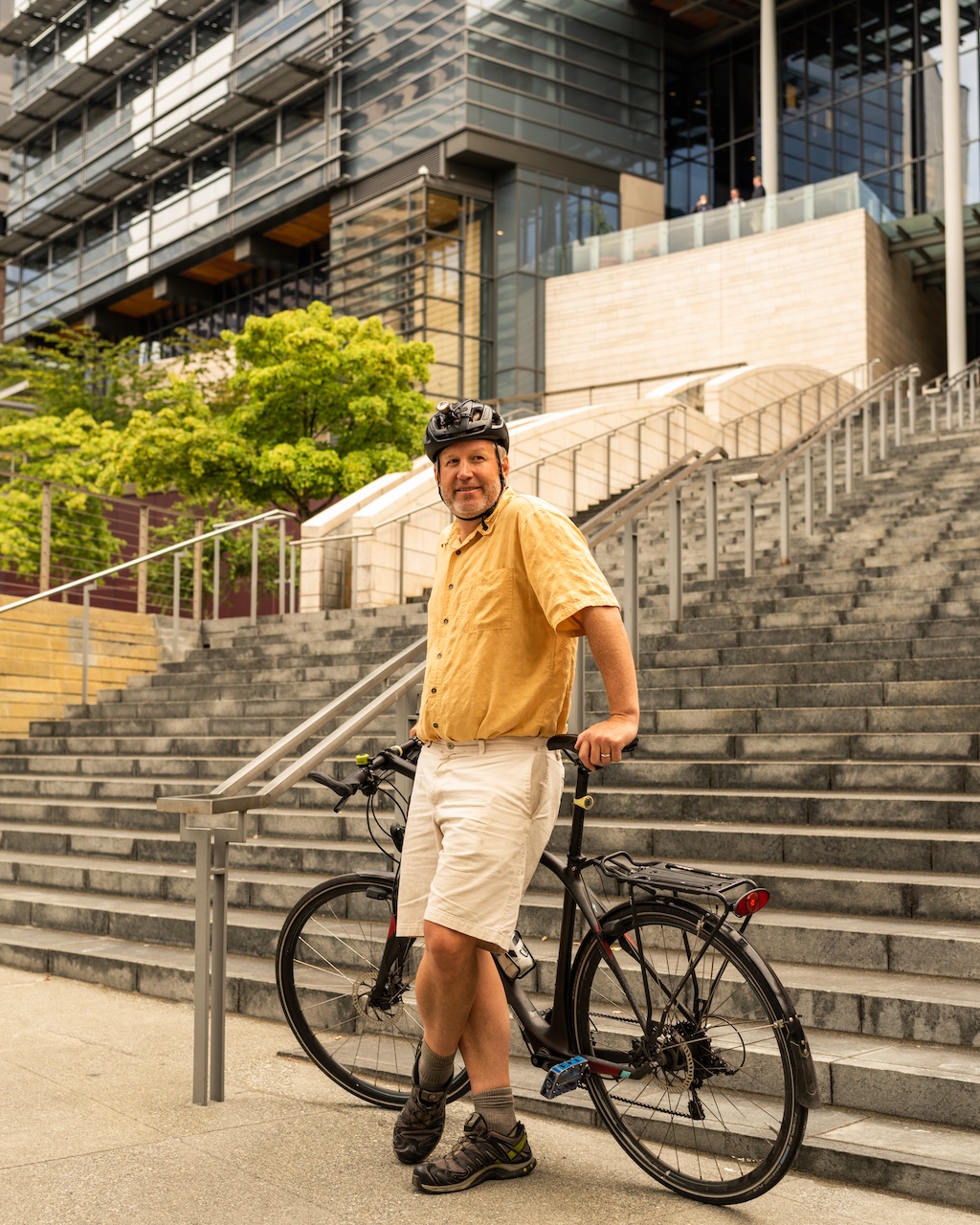
This neighbourhood is represented by City Council member Mike O’Brien, who’s been a vocal advocate of Seattle’s biking infrastructure. I ask the Seattle native why biking is so ingrained in the city. “There’s something about the people that live here and move here that draws them to bicycle,” he says. “There’s also a strong health and environmental ethic in Seattle that aligns well with a cycling lifestyle.” O’Brien, a daily bike commuter for 20 years, crosses the BGT every day. “Whether I’m running errands, biking with my kids or showing out-of-town guests around the city, I’m grateful to have the trail in my backyard,” he says.
Further west, in the lively warehouse district of Old Ballard, I meet Haley Keller, who runs Peddler Brewing Company with her husband. They wanted a place people could bike to, and when they found the garage-like space near the BGT and opened in 2013, the brewery’s biking theme made perfect sense. Inside, there are hooks to hang your bikes and tools for repairs.
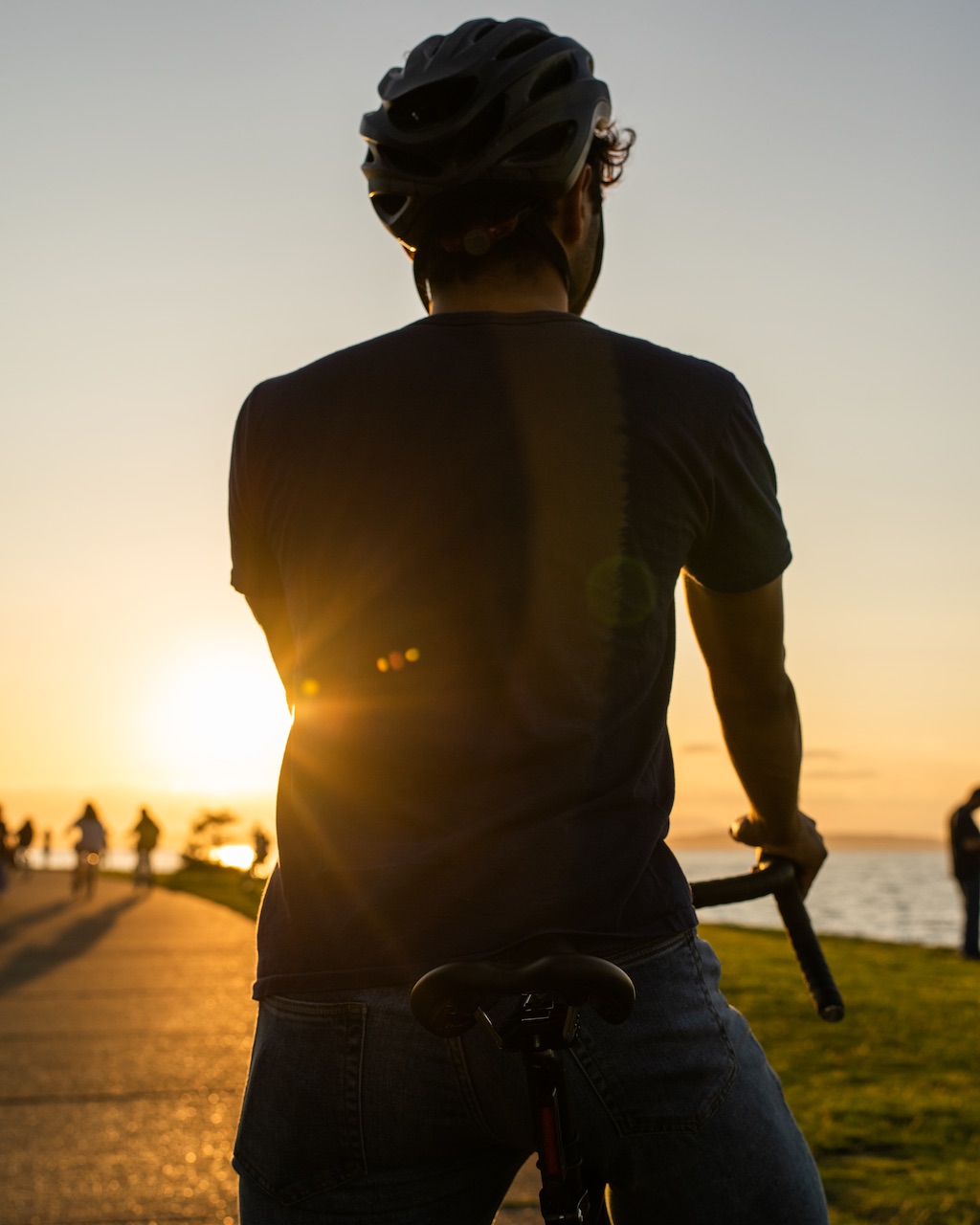
Business aside, biking is hardwired in Keller’s family. She is also a director on the board of the Cascade Bicycle Club, the largest statewide bicycle nonprofit in the United States, which was founded as a lobby group for the BGT over four decades ago. The first dates she had with her husband were bike rides. “My earliest memory of him is on his single-speed with his pant leg rolled up,” she says. And now they have a cargo e-bike with a seat for their infant son. She says that her nine-month-old will eventually learn to bike on the trail.
At Peddler Brewing, I also meet Keller’s brother-in-law, Mike Keller, whose (somewhat) ironic hairstyle adorns the label of Peddler’s Summer Mullet pilsner. He’s wearing a bright-green T-shirt that says “LimeBike”. This line of pedal-assist electric dockless shared bikes, similar to Mobike’s new offerings and Uber’s just-launched JUMP bikes (now being tested in Seattle in a pilot project), are found all along the BGT – as far as Woodinville on the Sammamish River Trail extension. I ask him what he thinks of the bikes scattered throughout the city. He’s straightforward: “I like more people on bikes.”
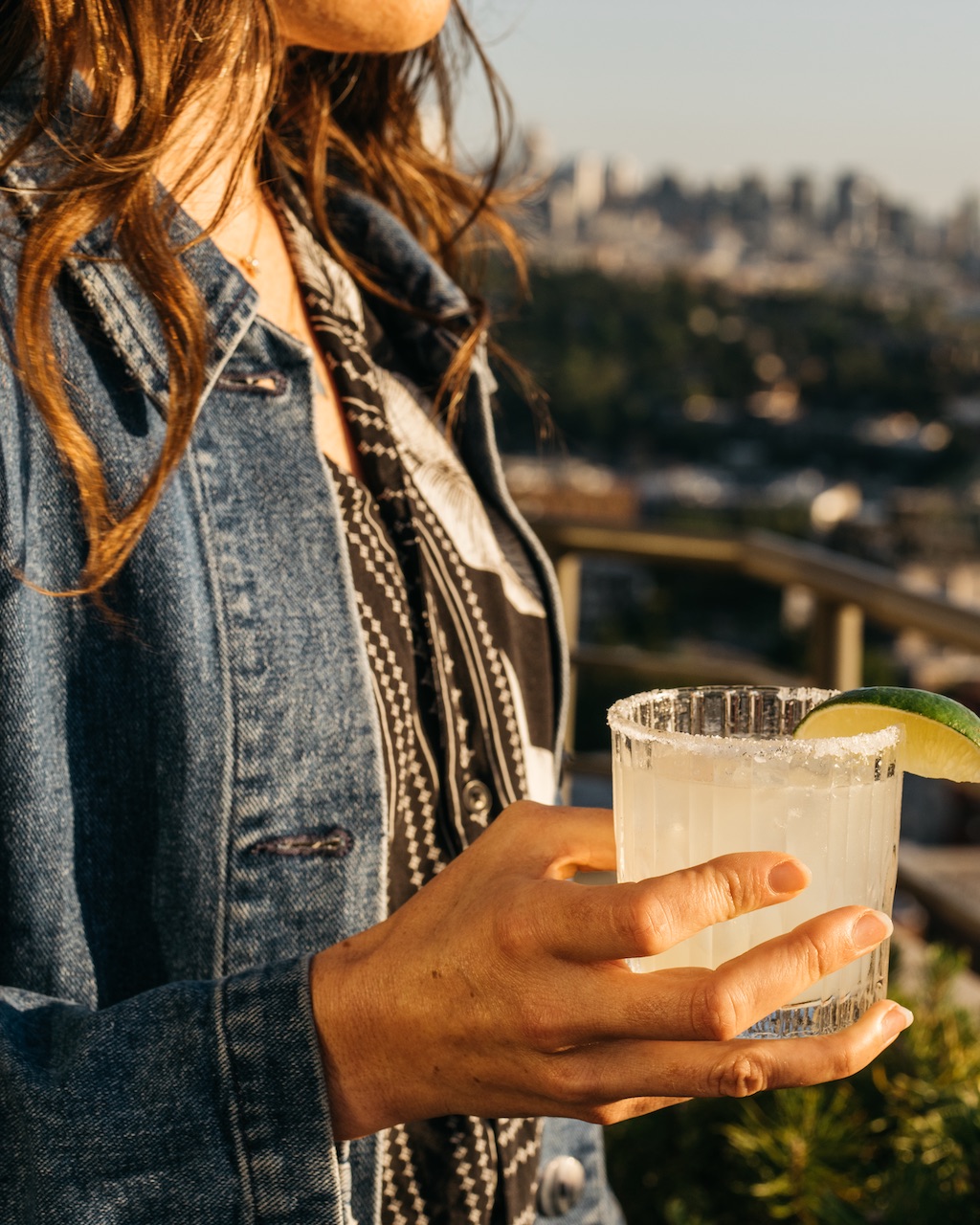
LimeBike is definitely getting more Seattleites on two wheels; the company recently announced that greater Seattle reached almost three million shared-bike rides since the scheme launched in 2017. I try a Lime-E electric bike at U-Dub, up the hill from the BGT to my hotel, the Graduate, where I leave the bike to climb (via elevator) to the Mountaineering Club rooftop bar for sunset. It has panoramic 360-degree views of the BGT’s route as it traces the waters between the peaks of the Olympic and Cascade ranges and the pink-tinged pyramidic Mount Rainer.
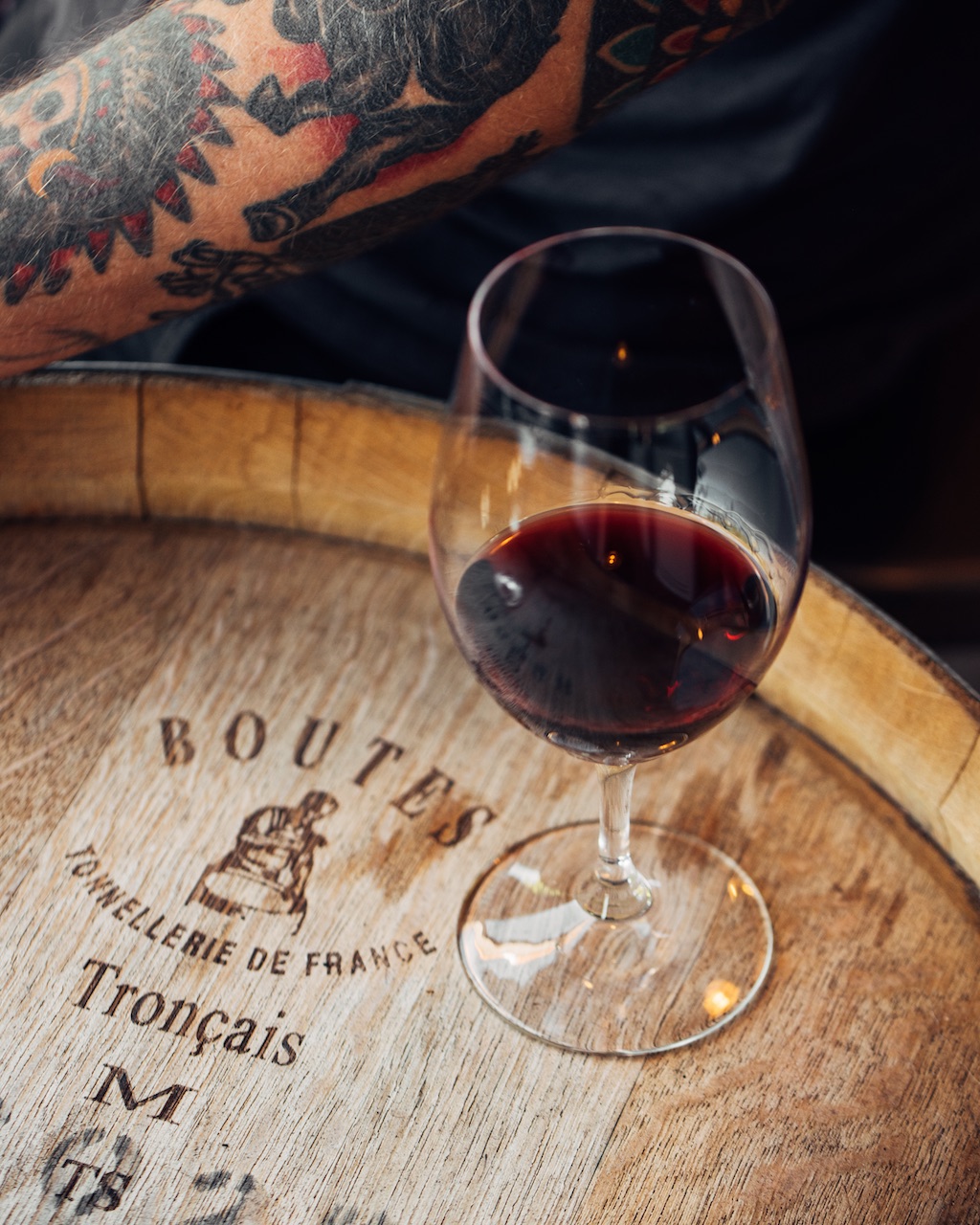
After seeing the BGT’s topography from high above, I decamp to the Eastside. Here, the popular weekend getaway of Woodinville has 112 wine tasting rooms showcasing Washington’s 950 wineries, most based in Columbia Valley on the other side of the Cascade Mountains. Metro Seattle may be beer central with close to 200 breweries – one of the highest concentrations in the US – but there’s more than IPA to sample on the BGT. “It’s the gateway to Washington wine because you can taste the whole state here,” says Sandra Lee, executive director of Woodinville Wine Country. “With all these wineries, we have every AVA (American Viticultural Area) [in Washington State] represented.”
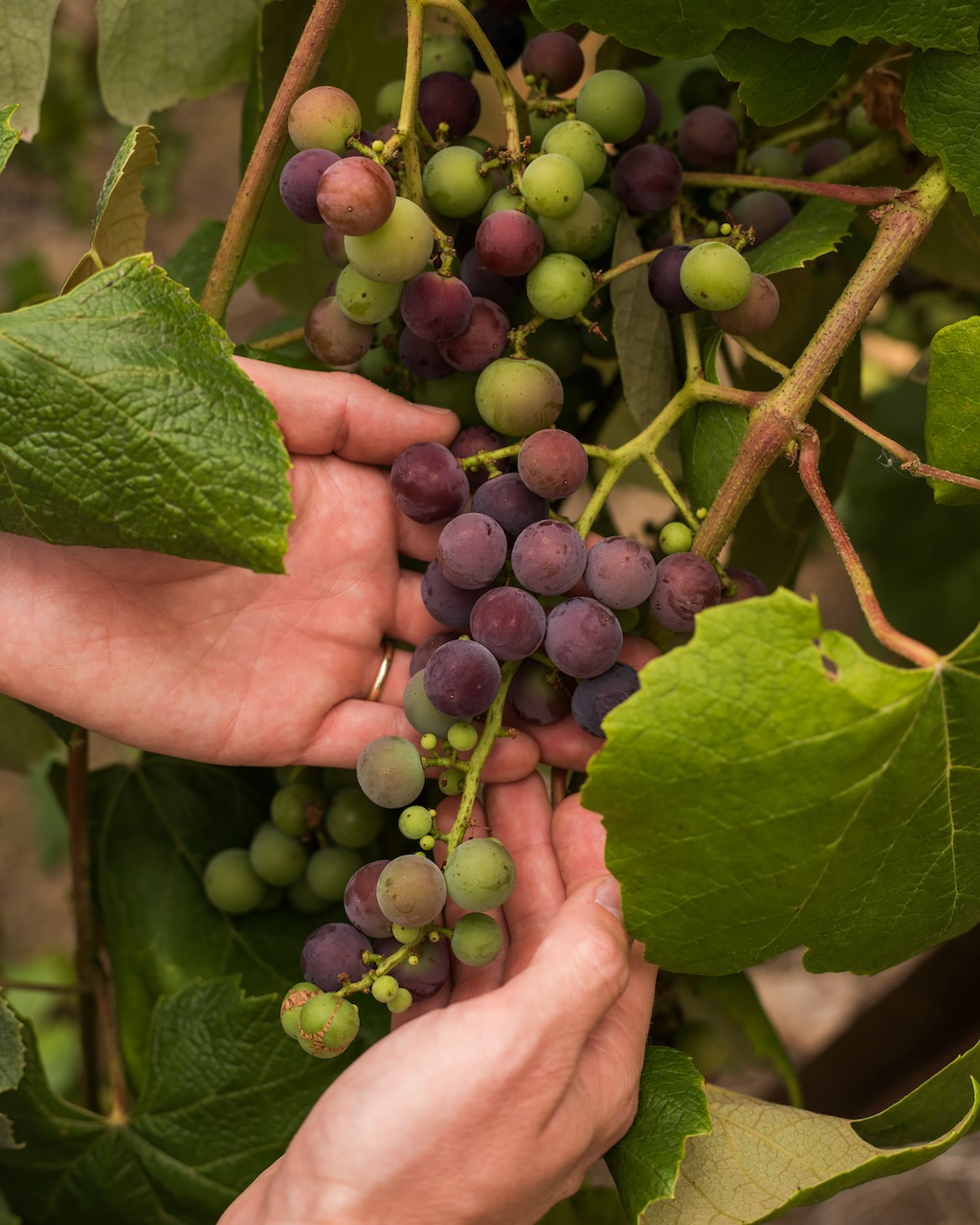
Just off the Sammamish River Trail extension of the BGT, I bike past ornamental rows of grapevines to the grande dame of Washington wine, Chateau Ste Michelle. One of the largest wineries in the state, it was the catalyst in Woodinville, transforming a dairy farm into a French-inspired wine destination back in 1976. Around the corner, I park my bike under an ancient tree at the concrete-cool Novelty Hill-Januik Winery for a tasting session. Afterwards, it’s an easy pedal back to the river and Willows Lodge, a former hunting retreat (Houdini was a guest) that’s now a hotel which also offers a stable of complimentary bikes.
By the end of my back-and-forth exploration of the BGT bike highway, I’ve logged 82km, sampled three juicy IPAs and Peddler’s delicious Horchata Cream Ale, tasted 12 Washington wines, scoped out nine different water views – from ocean to canal to lake to river – and tried five different bikes. I’ve crossed from urban to pastoral, asphalt to beach and beer to wine. Near the north end of Lake Washington, there’s a sign saying “Leaving Seattle”, where the railway-grade trail eases by lakeshore homes and peekaboo views of the water. When I double back, I smile at the other side of the sign: “Welcome to Seattle”.
Please check the establishments’ respective websites for opening hours as well as booking and seating requirements before visiting, and remember to adhere to safe-distancing measures while out and about.
To learn more about Singapore Airlines flights, visit singaporeair.com. For updates and travel advisories, please visit Ministry of Foreign Affairs’ website.
This article was originally published in the September 2019 issue of Silverkris magazine

